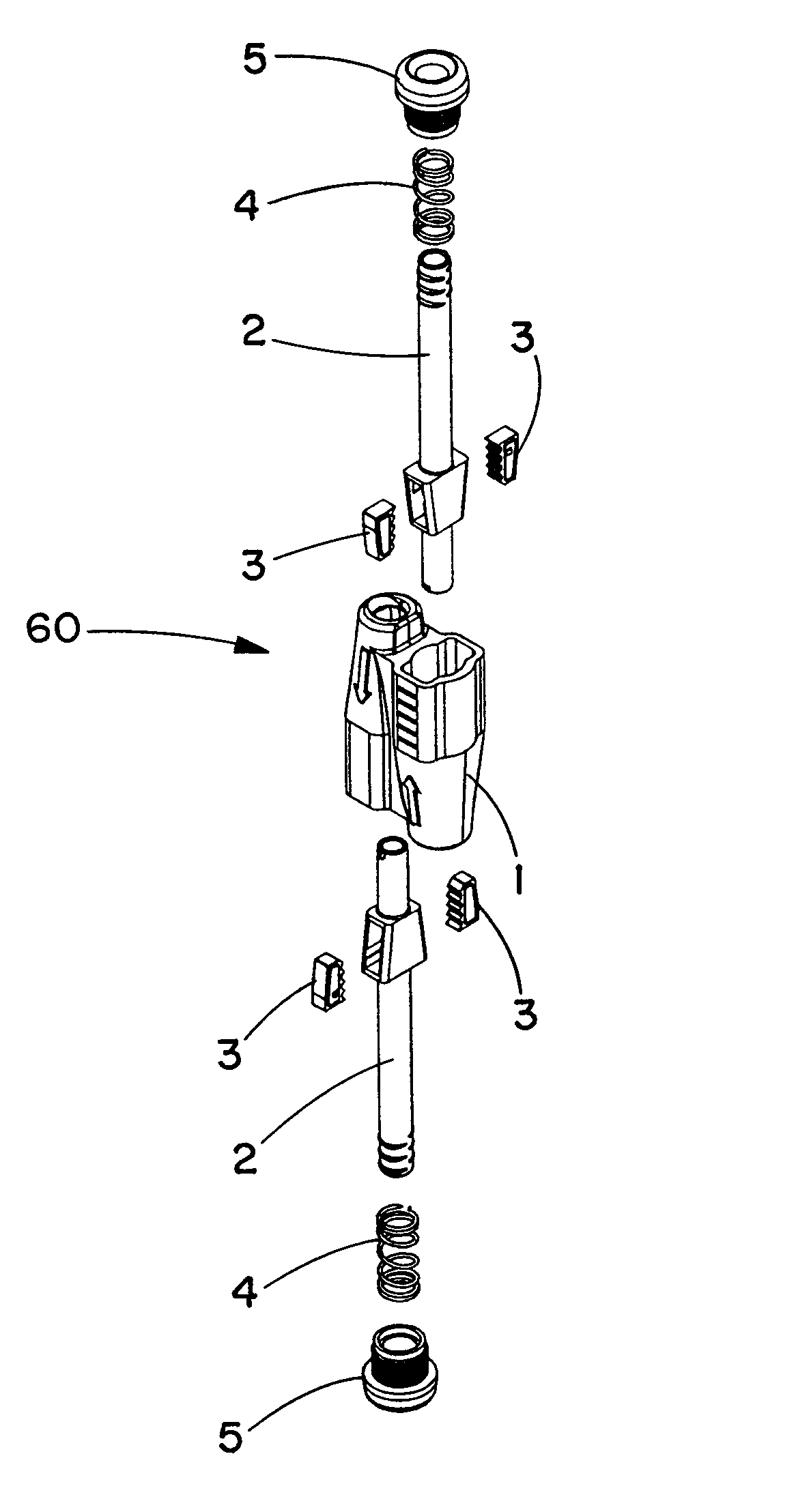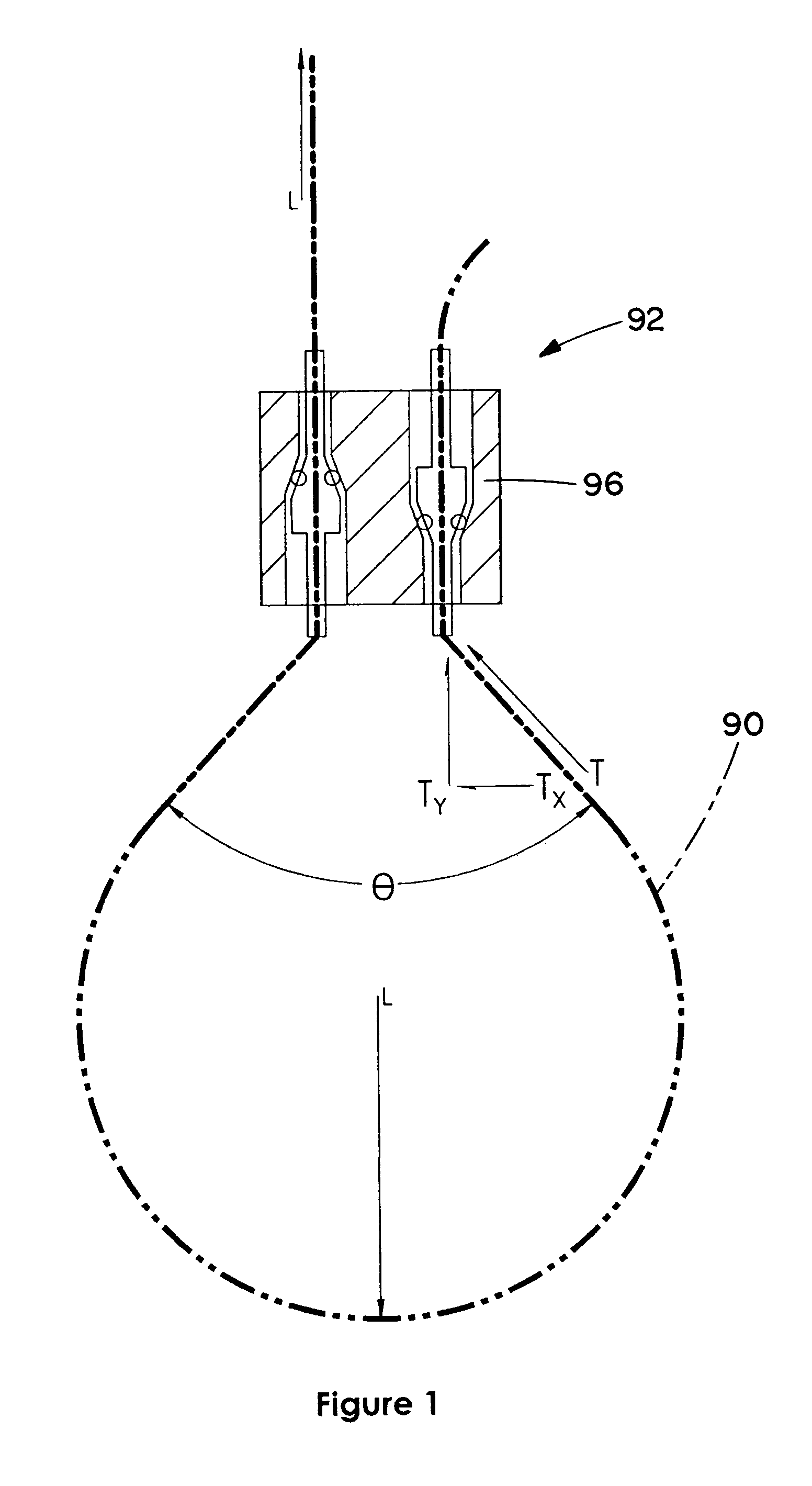Cable locking device
a locking device and cable technology, applied in the direction of cables, mechanical equipment, vehicles/pulleys, etc., can solve the problems of reducing the possibility of securing the length of the wire, and not always easy to release the grip on the wire. , to achieve the effect of reducing the principal stress and being convenient to apply
- Summary
- Abstract
- Description
- Claims
- Application Information
AI Technical Summary
Benefits of technology
Problems solved by technology
Method used
Image
Examples
Embodiment Construction
[0045]A device is used for gripping and securing cable for the purpose of suspending objects or loads. The device may be a two-barrel device that allows the user to create a loop of cable to secure to a hanging load, or to a structural member. The user of the locking device feeds the cable through one barrel, around an object to be suspended, and through the other barrel. The device has carriers installed in sockets in a housing, with wedge-shape jaws in openings in the carriers able to engage the cable and hold the cable within the device. Pushing or pulling of the carrier is used to release the spring force pressing the jaws inward, allowing the cable to be removed from the device.
[0046]Referencing FIGS. 1 and 2, as an angle Θ of a securing cable 90 increases (the angle at which is located a securement device 92 to get around an object 94 to be secured, shown in FIG. 2), the force component Ty increases. In combination with the tension in the cable 90 from a suspended load, such a...
PUM
| Property | Measurement | Unit |
|---|---|---|
| angle | aaaaa | aaaaa |
| flexible | aaaaa | aaaaa |
| force | aaaaa | aaaaa |
Abstract
Description
Claims
Application Information
 Login to View More
Login to View More - R&D
- Intellectual Property
- Life Sciences
- Materials
- Tech Scout
- Unparalleled Data Quality
- Higher Quality Content
- 60% Fewer Hallucinations
Browse by: Latest US Patents, China's latest patents, Technical Efficacy Thesaurus, Application Domain, Technology Topic, Popular Technical Reports.
© 2025 PatSnap. All rights reserved.Legal|Privacy policy|Modern Slavery Act Transparency Statement|Sitemap|About US| Contact US: help@patsnap.com



